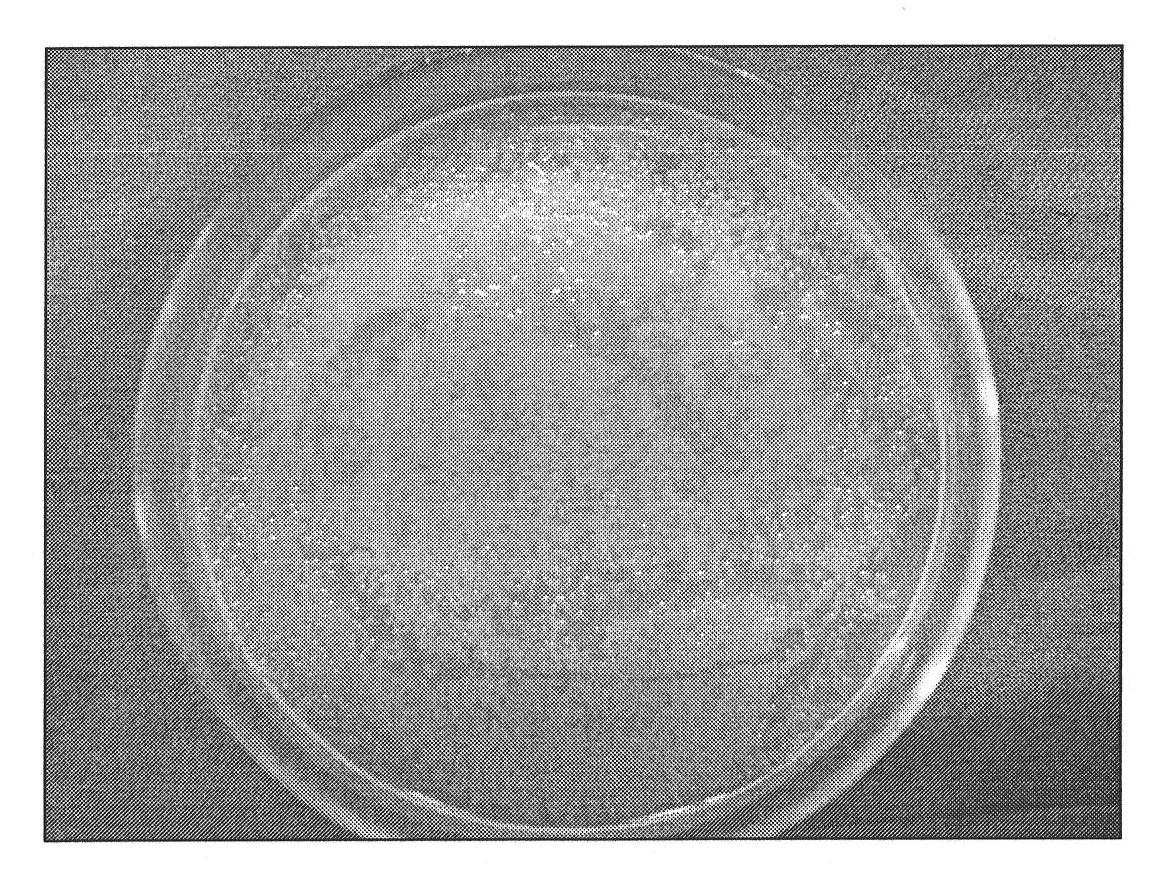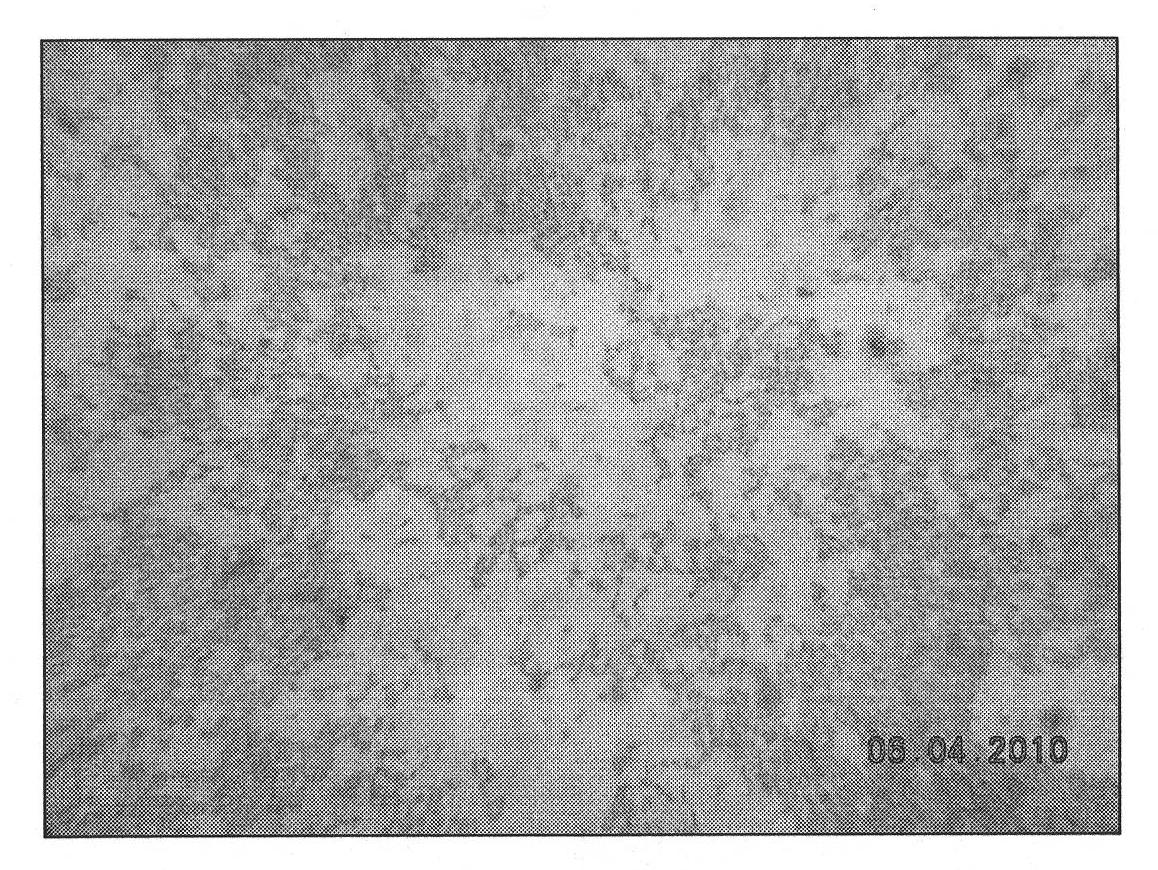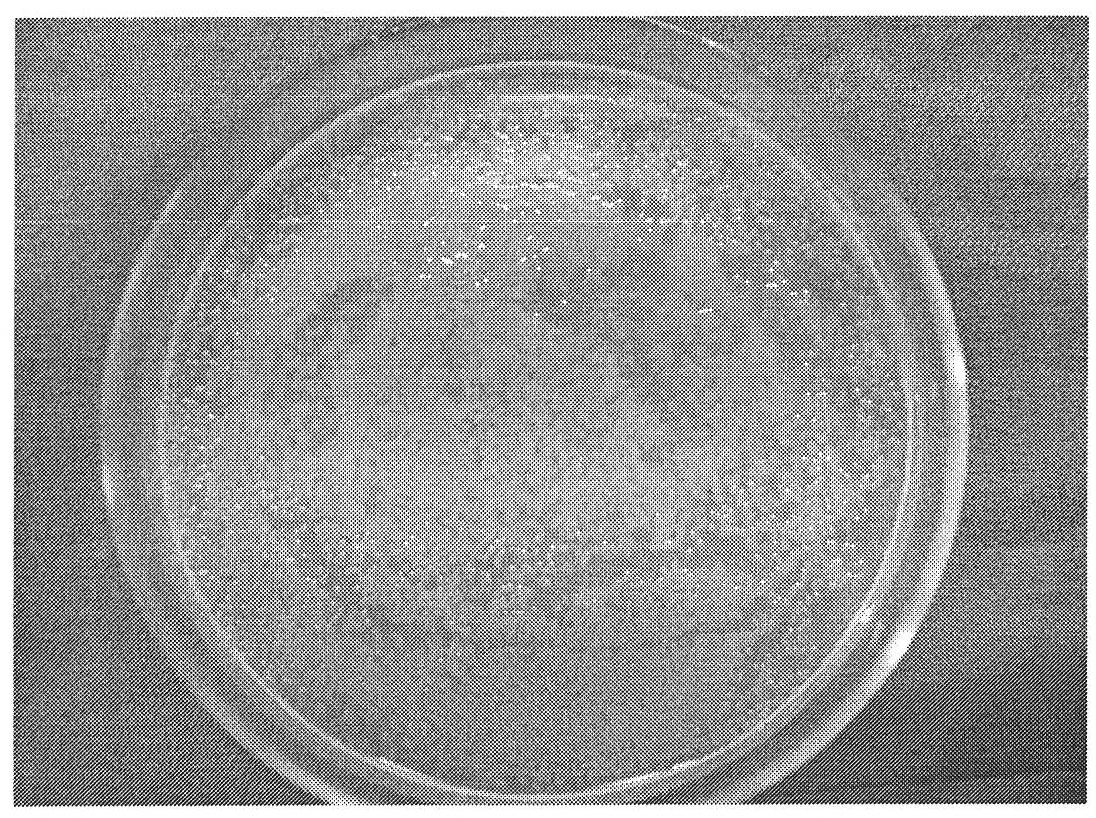Pseudomonas syringae pv.mori bacterial strain for producing coronatine and method for producing coronatine by fermentation thereof
A technology of pseudomonas and coronatine, applied in the field of microorganisms, can solve the problems of high cost of cooling equipment and so on
- Summary
- Abstract
- Description
- Claims
- Application Information
AI Technical Summary
Problems solved by technology
Method used
Image
Examples
Embodiment 1
[0015] This example illustrates the screening process of Pseudomonas syringae pv.mori M4-13 strain.
[0016] Collect mulberry branches and leaves infected with mulberry blight, mash them into a conical flask with 50mL of sterile water, add about 20 glass beads, shake vigorously for 20 minutes to completely mash the tissues, and let stand. Add 1mL of soil sample suspension into each 50mL sterile water Erlenmeyer flask, put it into a constant temperature shaking incubator, and incubate at 37°C for 2 days.
[0017] Take the suspension and spread it on the primary screening MG plate medium to carry out the primary screening of the enzyme-producing strains. The components of each liter of primary screening medium are: peptone 5.0g, mannitol 5.0g, sodium glutamate 1.15g, biotin 0.0001g, dipotassium hydrogen phosphate 0.25g, sodium chloride 0.1g, magnesium sulfate heptahydrate 0.1 g, agar 11g. The temperature is 32°C, and the cultivation time is 1 to 6 days. Select 20 strains that...
Embodiment 2
[0021] This example illustrates the coronatin activity of Pseudomonas syringae pv.mori M4-13 strain based on standard LB culture at 18°C.
[0022] Per liter medium composition: peptone 10g, yeast extract 5g, sodium chloride 10g, Pseudomonas syringae pv.mori (Pseudomonas syringae pv. After aerobic culture at 18°C for 7 days, the fermentation broth was tested by HPLC, and the concentration was 0.54mg / L.
Embodiment 3
[0024] The method of this example is the same as that of Example 2, and the optimized HSC medium is used instead for culture, and its coratin-producing activity is detected.
[0025]The composition of each liter of medium: 4.1 g of dipotassium hydrogen phosphate, 3.6 g of potassium dihydrogen phosphate, 1 g of ammonium chloride, 0.2 g of magnesium sulfate heptahydrate, 2 μM of ferric chloride, and 20 g of glucose, Pseudomonas syringaepv .mori) M4-13 was inoculated in the culture medium with an inoculum size of 1%, and cultured aerobically at a temperature of 18° C. for 7 days, and the fermentation broth was tested by HPLC, and the concentration was 2 mg / L.
PUM
 Login to View More
Login to View More Abstract
Description
Claims
Application Information
 Login to View More
Login to View More - R&D
- Intellectual Property
- Life Sciences
- Materials
- Tech Scout
- Unparalleled Data Quality
- Higher Quality Content
- 60% Fewer Hallucinations
Browse by: Latest US Patents, China's latest patents, Technical Efficacy Thesaurus, Application Domain, Technology Topic, Popular Technical Reports.
© 2025 PatSnap. All rights reserved.Legal|Privacy policy|Modern Slavery Act Transparency Statement|Sitemap|About US| Contact US: help@patsnap.com



